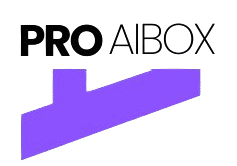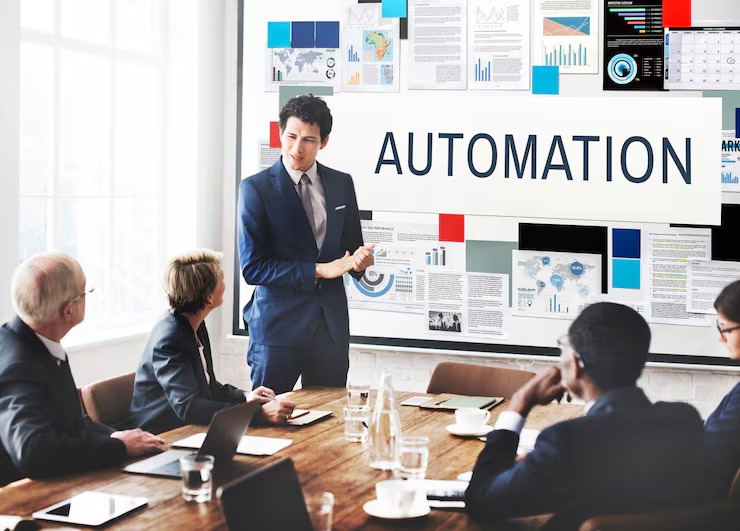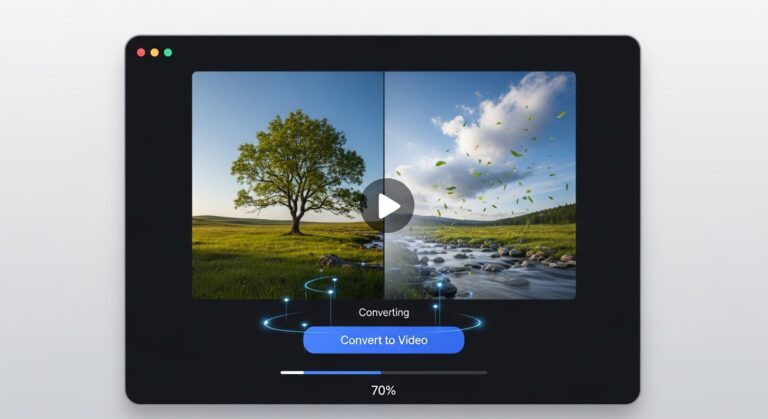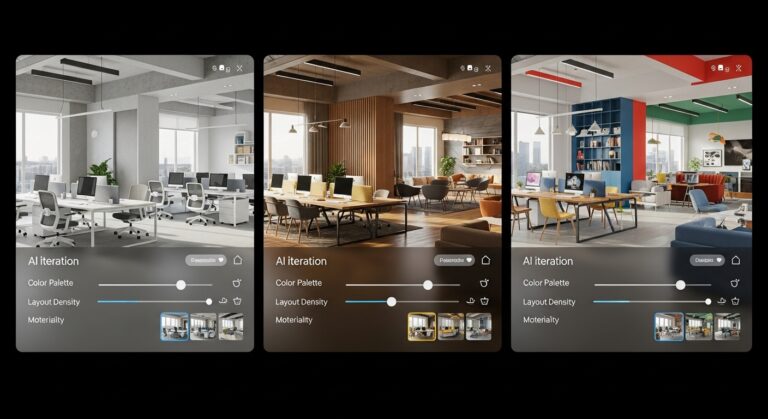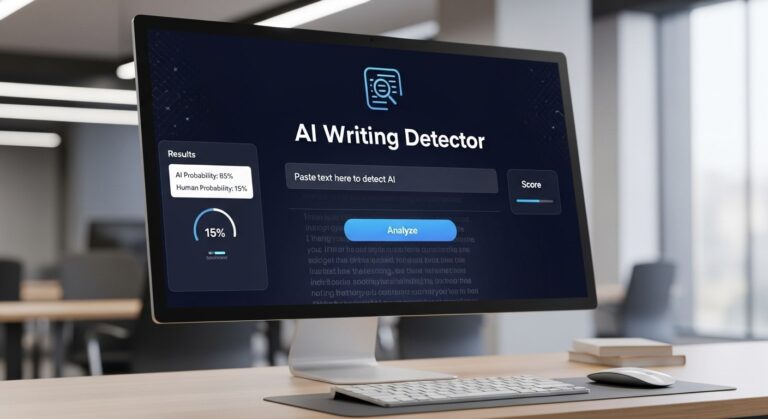Artificial Intelligence isn’t a futuristic dream anymore. It’s quietly working behind the scenes, running operations, managing customer data, and predicting what a business should do next.
So, how does AI automate a business in reality? The answer is simpler than it seems, it’s about using data and algorithms to handle repetitive tasks, speed up decisions, and help people focus on what matters most.
Businesses across every industry are learning that automation isn’t just about replacing human effort. It’s about saving time, increasing precision, and reducing burnout caused by manual processes. Whether it’s scheduling emails, processing invoices, or managing customer service, AI has become a behind-the-scenes worker that never sleeps.
What Is AI Automation in Business?
AI automation means combining artificial intelligence with workflow systems to make decisions automatically. Traditional automation could follow fixed instructions, like copying data or sending alerts. But AI automation goes beyond that. It learns from patterns, understands context, and improves over time.
For example, a support chatbot that can understand tone and respond with empathy isn’t just following a script, it’s learning from thousands of interactions. That’s the real difference between old automation and AI-driven automation.
AI automation is now shaping how small and large businesses operate. It can analyze sales data, predict trends, and even write reports. In short, it helps businesses move faster with fewer mistakes and smarter insights.
Why Are Businesses Turning Toward AI Automation?
Every business wants to grow faster and cut unnecessary costs. That’s where AI fits perfectly. It handles time-consuming processes like data entry, scheduling, or answering customer queries.
According to a McKinsey study, nearly 55% of businesses now use AI in at least one function. The reason is clear: AI improves efficiency without demanding extra human labor.
The companies adopting AI automation are also seeing a noticeable edge. They’re not guessing their next steps; they’re acting on data-driven insights. This level of intelligence makes their decisions sharper and their strategies more predictable.
For small businesses, the attraction is even greater. They can scale faster, automate their marketing, and serve more customers without increasing their team size.

How AI Automates Different Business Areas?
AI’s biggest strength is adaptability. It doesn’t belong to one department, it fits anywhere efficiency is needed.
AI in Marketing
AI analyzes audience behavior, optimizes ad campaigns, and predicts what kind of content performs best. Instead of testing endless variations, businesses can let AI suggest what works.
Email personalization, ad targeting, and even content writing can now run automatically. It’s not about replacing marketers but about giving them insights faster than ever before.
AI in Operations
From managing inventory to scheduling deliveries, AI keeps operations smooth. It can predict when a product will go out of stock or when machinery needs maintenance, before it happens. That predictive ability saves both time and cost.
AI in Customer Service
Chatbots are the face of customer support automation. They reply instantly, never get tired, and can handle multiple queries at once. But the real value lies in their ability to learn from every conversation. The more they chat, the better they get at solving real problems.
AI in Finance
AI-driven systems can track spending, generate financial summaries, and detect anomalies that humans might miss. Many businesses use AI to catch fraud or forecast cash flow with higher accuracy.
AI in Human Resources
Recruitment has become smarter with AI-powered screening. Instead of manually reading hundreds of resumes, systems can shortlist the best candidates based on data and skills. HR teams also use AI to manage onboarding, internal communication, and employee engagement.
In short, AI workflow automation is reshaping every corner of modern business life.
How AI Works Behind the Scenes?
AI works by analyzing data and recognizing patterns. It’s not magic, it’s math and logic applied at scale.
Imagine you feed it thousands of examples of customer emails. Over time, it learns how people ask questions, what problems are common, and what tone works best in replies. Next time a similar message comes in, it already knows the right response.
That’s how AI brings automation to life, by learning, adapting, and acting faster than humans can.
Unlike traditional software, AI doesn’t need fixed instructions. It improves automatically with experience, making it perfect for business environments where speed and accuracy matter.
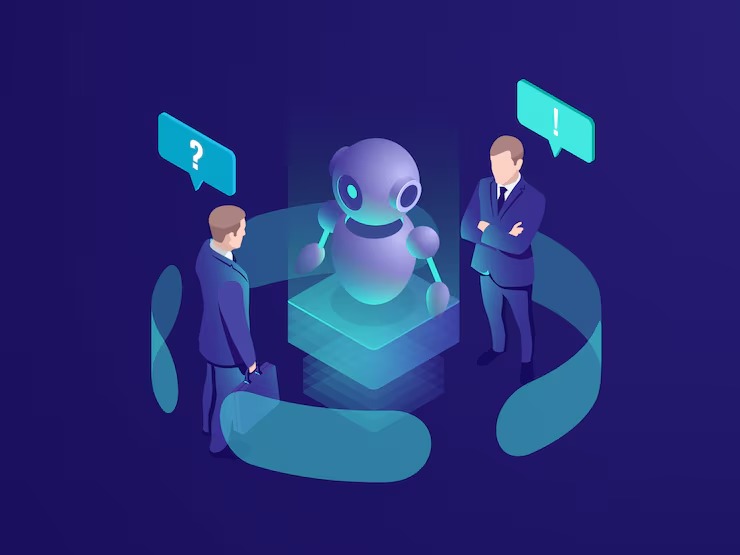
The Practical Side of Implementing AI Automation
If you don’t have serious in-house AI expertise, it’s best to work with a consultant or at least define your goals clearly before selecting tools. Tool selection doesn’t occur in isolation, it’s part of a broader AI business strategy.
Start small. Automate one part of your workflow, like reporting, scheduling, or email communication. Once it works, expand gradually. Businesses often fail because they try to automate everything at once without a clear direction.
AI automation isn’t about jumping on trends; it’s about solving actual pain points. Maybe your team spends hours answering repetitive queries or manually updating sheets; those are perfect starting points.
This isn’t an area where businesses should hesitate. Competitors are already experimenting and gaining efficiency fast. The earlier you integrate AI-driven processes, the sooner you’ll see measurable results.
How Businesses Use AI to Gain an Edge?
Today, being competitive isn’t just about having a great product, it’s about operating smart. Businesses using AI are gaining speed, accuracy, and clarity in decision-making.
For example, predictive AI can help companies plan stock levels or manage seasonal demand. Marketing teams use data models to understand customer intent before launching campaigns.
Small startups are using AI automation to act like big companies. The gap between resource-rich enterprises and lean startups is shrinking, thanks to technology that levels the playing field.
The lesson is clear: automation is no longer optional. The businesses that use AI efficiently are the ones shaping the future.
Challenges of AI Automation
No system is perfect. While AI automation boosts productivity, it also brings new challenges.
- Data privacy: AI relies on large amounts of information. Mishandling sensitive data can create legal and ethical issues.
- Cost of setup: Though prices are dropping, quality AI systems still require investment.
- Skill gap: Many employees need training to work effectively with AI tools.
- Over-dependence: Relying too much on automation can weaken human decision-making.
The goal is balance. Use AI to simplify work, not to eliminate the human touch that keeps businesses personal and trusted.
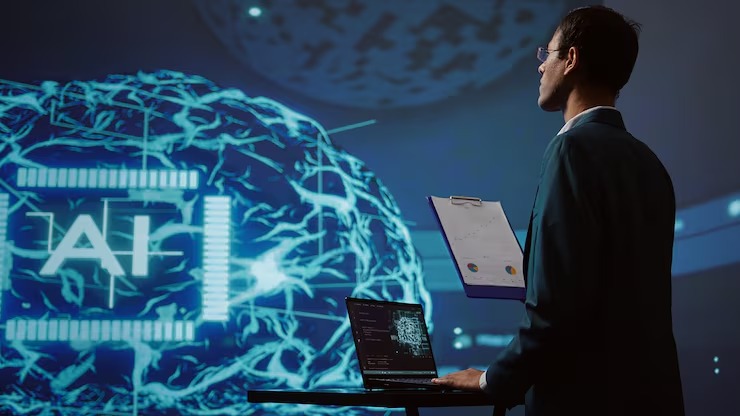
The Future of AI-Driven Businesses
The next stage of AI automation isn’t about simple task replacement, it’s about collaboration between humans and intelligent systems.
AI will soon move from automating repetitive work to predicting business outcomes. Decision-making will become proactive instead of reactive. Systems will alert you before an issue happens, not after.
Experts from Harvard Business Review suggest that the future of business strategy will rely heavily on AI-led insights. Companies that adapt early will have the advantage of speed, learning, and precision.
In short, businesses that use AI responsibly and strategically will define the next decade of growth.
Conclusion
AI is no longer a luxury for big corporations, it’s a practical necessity for any business that wants to stay competitive.
How does AI automate a business? It does it by understanding data, removing repetitive work, and improving decision-making at every level. It gives people the freedom to focus on creativity and growth while machines handle the routine.
The message for modern businesses is simple: don’t wait. Start small, learn fast, and build automation around your biggest challenges. The future belongs to those who can blend human intelligence with artificial intelligence.
FAQs
1. What are the main benefits of AI automation in business?
AI automation reduces errors, saves time, and improves overall productivity. It helps companies make faster, more reliable decisions based on data instead of assumptions.
2. How can small businesses use AI if they have limited budgets?
Small businesses can start with basic automation, such as automating emails, scheduling, or invoicing. Over time, they can scale into more advanced AI applications like analytics or predictive tools.
3. What industries benefit most from business automation with AI?
Retail, marketing, healthcare, finance, and manufacturing are leading adopters. However, any business dealing with repetitive data or large customer interactions can gain from AI automation.
4. Is AI replacing human jobs in businesses?
Not entirely. AI replaces repetitive tasks, but it also creates new roles in strategy, supervision, and creative problem-solving. It shifts focus from routine work to higher-level thinking.
5. What’s the first step toward building an AI-driven business strategy?
Start by identifying your biggest workflow bottlenecks. Ask: Which tasks are repetitive and time-consuming? Those areas are ideal for automation. Once results appear, expand the strategy across departments.
